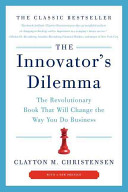

Disruptive innovation refers to the process by which smaller companies with fewer resources are able to successfully challenge established businesses. This occurs when these smaller firms introduce products or services that are initially simpler, cheaper, or more convenient than those offered by the incumbents. Over time, these innovations improve and begin to appeal to more demanding customers, ultimately displacing the established players. The book highlights how established companies often overlook these disruptive innovations because they don't initially seem profitable or appealing. As a result, they fail to adapt to changing market conditions and can lose their market position. Understanding disruptive innovation is crucial for companies to remain competitive and avoid being overtaken by new entrants in their industry.
Continue readingSustaining innovation involves improvements to existing products or services that enhance their performance and appeal to current customers. Established companies typically excel at sustaining innovation because they have the resources and market knowledge to invest in incremental improvements. This type of innovation is essential for maintaining market share and profitability. However, the book posits that a focus solely on sustaining innovation can lead to a company's downfall if it causes them to ignore disruptive innovations that could redefine the market landscape. Companies must balance their efforts between sustaining and disruptive innovation to ensure long-term survival.
Continue readingThe value network is a concept that describes the ecosystem in which a company operates, including suppliers, customers, and competitors. It influences how companies create and deliver value. The book emphasizes that established companies often operate within a value network that prioritizes current customers and their needs. This focus can lead to a blind spot regarding emerging technologies and market shifts. Startups, on the other hand, may operate in a different value network that allows them to explore disruptive innovations without the constraints of existing customer expectations. Understanding one’s value network is crucial for companies to identify opportunities for innovation and adapt to market changes.
Continue readingMarket segmentation is the process of dividing a broader market into smaller, more defined categories of consumers. The book discusses how established companies often segment their markets based on current customer needs and preferences, which can lead to a failure to recognize emerging markets created by disruptive innovations. New entrants may target overlooked segments, gradually building a foothold before moving upmarket. This can catch established companies off guard as they find themselves competing against new players who have developed products that meet the needs of previously ignored customers. Companies must be proactive in understanding market segmentation to remain competitive.
Continue readingResource allocation is the process of distributing a company's resources, such as capital and personnel, to various projects and initiatives. The book argues that established companies often allocate resources based on existing customer demands, which can hinder their ability to invest in disruptive innovations. This is compounded by the fact that disruptive innovations typically require different business models and operational approaches than sustaining innovations. Companies need to create mechanisms to allocate resources to explore these new opportunities without jeopardizing their core business. This involves fostering a culture of experimentation and risk-taking that encourages innovation.
Continue readingThe organizational structure and culture of a company play a significant role in its ability to innovate. The book highlights that established companies often have rigid structures and cultures that prioritize efficiency and risk aversion. This can stifle creativity and hinder the exploration of disruptive innovations. To counter this, companies need to cultivate a culture that embraces innovation, experimentation, and agility. This may involve creating separate units or teams focused solely on exploring disruptive technologies and markets. A flexible organizational structure can help companies pivot and adapt to new opportunities as they arise.
Continue readingStrategic decision-making is the process by which companies determine their long-term direction and priorities. The book emphasizes that established companies often make decisions based on historical data and current market conditions, which can lead to a failure to anticipate disruptive changes. Companies must adopt a forward-thinking approach to strategic decision-making that considers potential disruptions and emerging trends. This involves scenario planning, market research, and engaging with external stakeholders to gain insights into future developments. By being proactive in their decision-making, companies can position themselves to capitalize on disruptive innovations and avoid being blindsided.
Continue reading